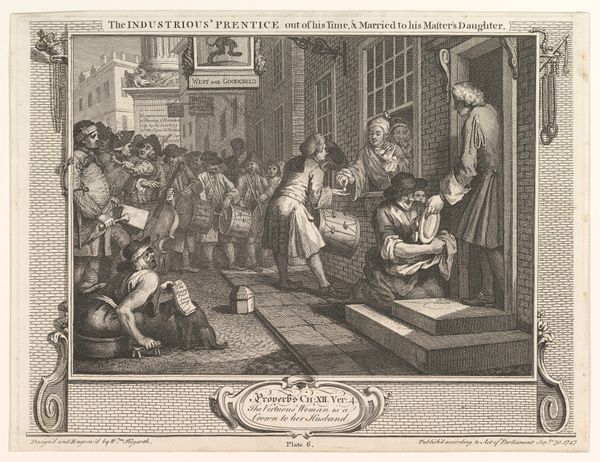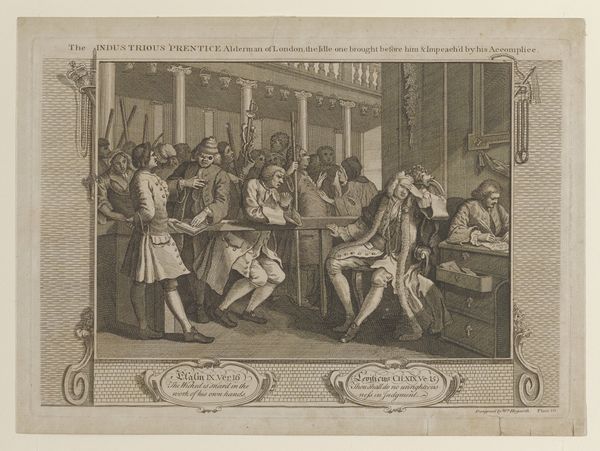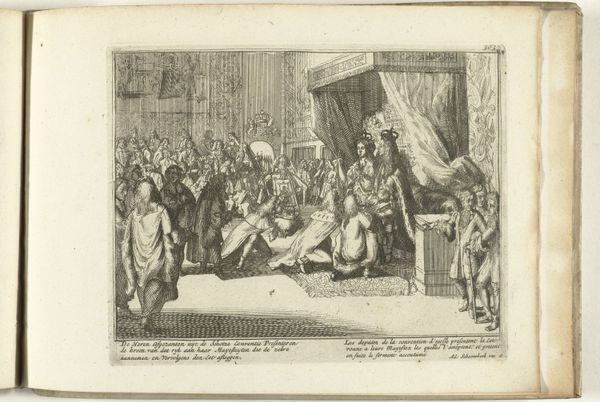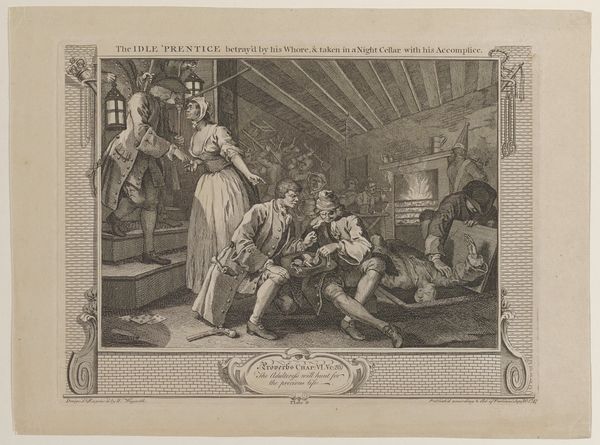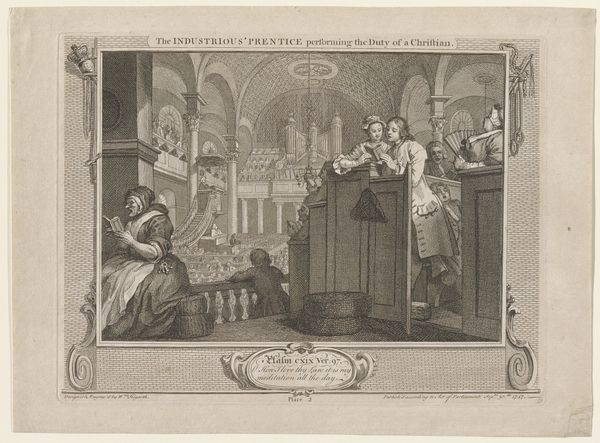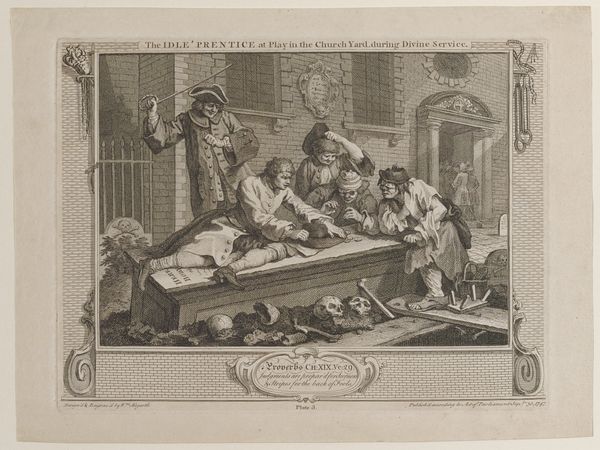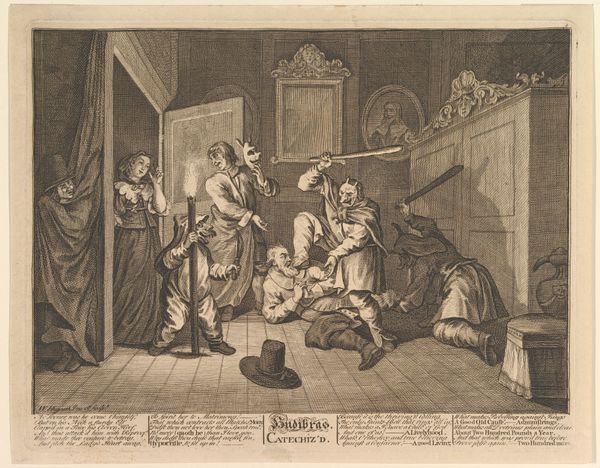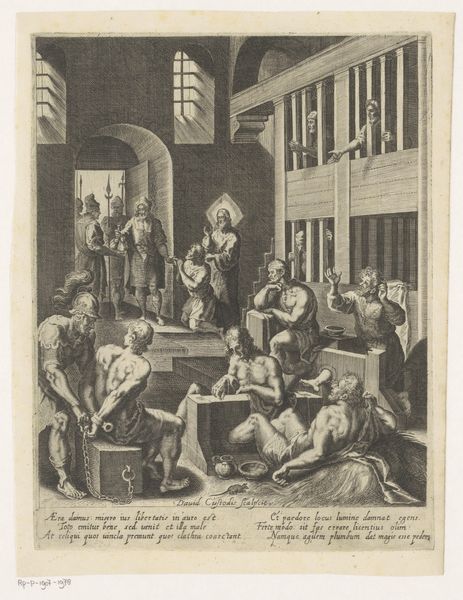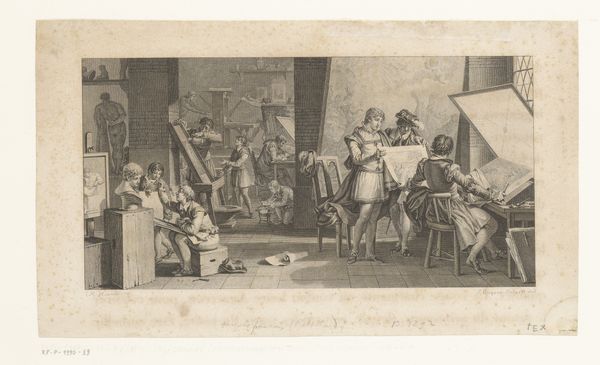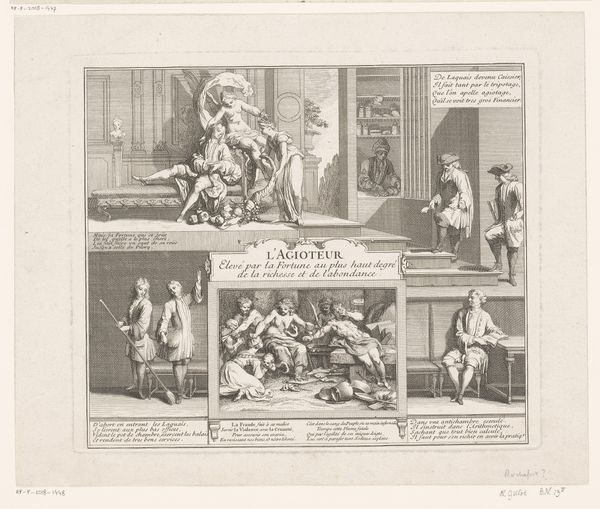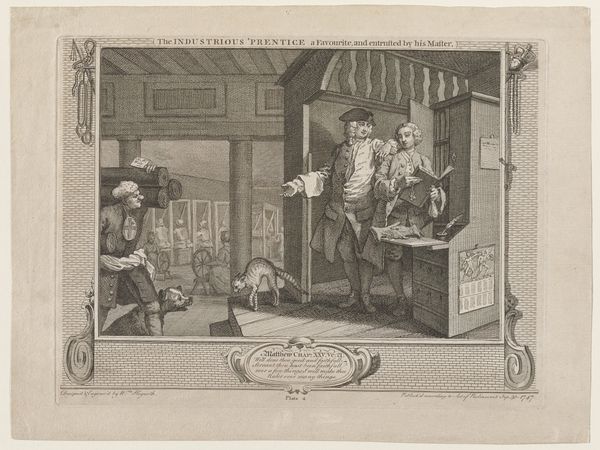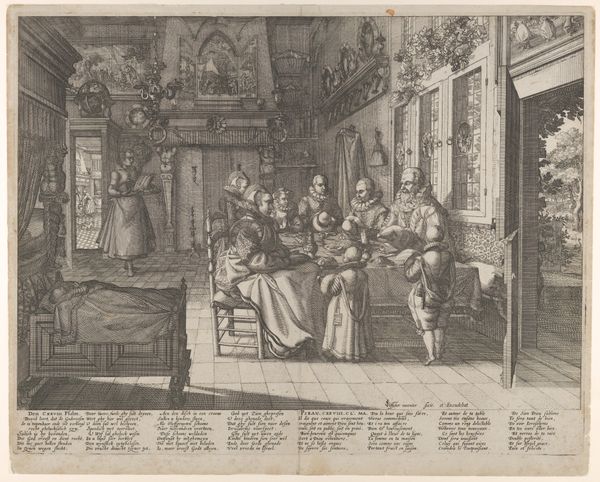
print, etching
#
narrative-art
#
baroque
# print
#
etching
#
genre-painting
Dimensions: 10 3/8 x 13 11/16 in. (26.35 x 34.77 cm) (sheet)
Copyright: Public Domain
Curator: Welcome to the Minneapolis Institute of Art. We’re standing before William Hogarth’s etching from 1747, "The Industrious 'Prentice out of his Time, & Married to his Master's Daughter." Editor: What a joyous explosion of orderly chaos! All those neatly packed figures bursting out from behind a newly married couple. There’s so much happening. It feels a bit like a play crammed onto a stage, or life pressing up close to see if everyone is going to make it. Curator: Exactly! Hogarth, remember, aimed to create modern moral subjects. Prints like these were affordable, immensely popular, and became part of a rising print culture, often displayed in homes and coffee houses. The industrious apprentice is being celebrated for working hard, and therefore being successful. Editor: The guy kneeling to receive a blessing? He’s got the look of someone who suddenly realized he accidentally bought a lifetime supply of kale. There is something rather hilarious about the seriousness with which everyone, besides the dog who is pooping by the leg of the beggar, seems to take things! Curator: Hogarth’s prints served a social function. They upheld ideals and commented on contemporary society. Notice the context of industry: signs of commerce, craft displayed around the figure to signify social class and economic life. In this, it reflects the social fabric of 18th-century London. Editor: It is also quite theatrical; there is definitely an engagement with baroque theater in these kinds of scenes. It’s all arranged for the benefit of the viewer—and, might I add, it offers a window onto anxieties, particularly economic, that the artist felt might topple the delicate performance. Curator: That's astute. He certainly wanted his art to teach a moral lesson but in doing so also holds a mirror up to the complexities of London. He understood how easily a system based on labor can fall. Editor: Looking at Hogarth, I’m reminded that art often serves as a repository for society’s hopes, fears, and aspirations, however humorously. And how looking is work as much as labour, but for us! Curator: Indeed. It provides us with perspectives to engage with the past.
Comments
No comments
Be the first to comment and join the conversation on the ultimate creative platform.
